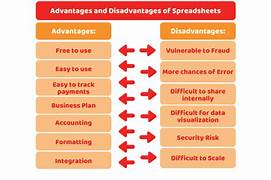Advantages & Disadvantages of Control Accounts
As with any business practice, control accounts have pros and cons. Here is a brief overview:
 Advantages of control accounts
Advantages of control accounts
- Control accounts simplify the general ledger, reduce clutter, and highlight key information from subsidiary transactions.
- Managers can quickly review financial status via control account balances without sifting through all transactions.
- Control and subsidiary accounts increase financial reporting accuracy by making discrepancies easier to spot and resolve.
- Assigning ownership of control and subledger accounts deters fraud.
Disadvantages of control accounts
- The main downside is the workload to set up, manage, and fix differences, which can be a full-time job in large companies.
- Control account managers must monitor and verify balances, a role that may need extra oversight.
- Control accounts may require extra training and budget to ensure correct integration with subledgers.
While control accounts offer strong oversight and control, extra staffing, training, and reconciliation may make them unsuitable for small firms.
 Understanding the risks and commitments, you may wonder about the concrete assurances control accounts can offer:
Understanding the risks and commitments, you may wonder about the concrete assurances control accounts can offer:
When verifying ledger accuracy, such as in receivables or payables, control accounts are essential.
Sales Ledger Control Account
The sales ledger summarizes the total money owed by customers. This total should equal all customer accounts in the subsidiary sales ledger.
Comparing the control account with the sales ledger total is called ‘reconciliation’. If errors appear, investigate, correct, and update both totals to match.
Purchase Ledger Control Account
Control accounts also apply to purchase ledgers. The total of supplier accounts must match the purchase ledger control account.
To ensure accuracy, regular reconciliations between the control and subsidiary ledgers are required. If errors are found, it is often because some transactions recorded in the subsidiary ledger have not yet been posted to the control account or have been posted incorrectly.
Keeping control and subsidiary ledgers aligned confirms accurate ledger postings. This builds confidence among stakeholders in the reliability of financial reporting.
Having established their role, it’s important to ask whether every business actually needs control accounts:
Not all businesses need control accounts. The process can be time-consuming, and smaller businesses may lack resources.
While generally helpful, control accounts are especially useful in certain cases:
- Large transaction volumes – Control accounts are useful when there are frequent or repetitive transactions that would clutter general ledgers, such as accounts receivable/payable.
- Complex operations – Larger companies with multiple business units, locations, products, etc., generate details that are better compartmentalised.
- Permission restrictions – Control accounts allow restricting access to details by limiting employees to either control or subsidiary ledgers.
- Automation can help by recording transactions in both subledgers and control accounts. This maximizes the benefits of control accounts by saving time and reducing manual posting errors.
- Auditing – Control accounts provide balances for audit testing and an audit trail through transaction details.
- Reporting – Summary balances facilitate efficient financial statements and reporting for management.
The following businesses will typically have a lot of control accounts:
- Manufacturing – High volumes of inventory, suppliers, and customers.
- Retail – Large sales transactions and inventory SKUs to track.
- Financial services – Numerous customer accounts and transactions.
- Multinationals – Complex structures and regulatory requirements.
The Control Account Process Explained
 When setting up a control account, define the account structure and subledger details to track. Enter transactions in both the control and subsidiary ledger. For example, logging a new customer invoice increases both the accounts receivable control balance and the customer subledger.
When setting up a control account, define the account structure and subledger details to track. Enter transactions in both the control and subsidiary ledger. For example, logging a new customer invoice increases both the accounts receivable control balance and the customer subledger.
In addition to operational benefits, control accounts play a valuable role during audits:
Control accounts aid auditing by showing summary balances instead of many individual transaction details in the subledgers.
Audits check that control account totals match ledger accounts and that transactions are properly recorded. Discrepancies trigger investigation and ensure a complete audit trail.
How To Troubleshoot Control Account Differences
When reconciliation shows discrepancies, correct imbalances by:
Check for data entry errors like duplicates, incorrect times, or unsupported entries.
If you can’t find the error in the subledger, adjust the control account with manager approval.
Frequent control and subledger mismatches may signal a weakness in the control account.

